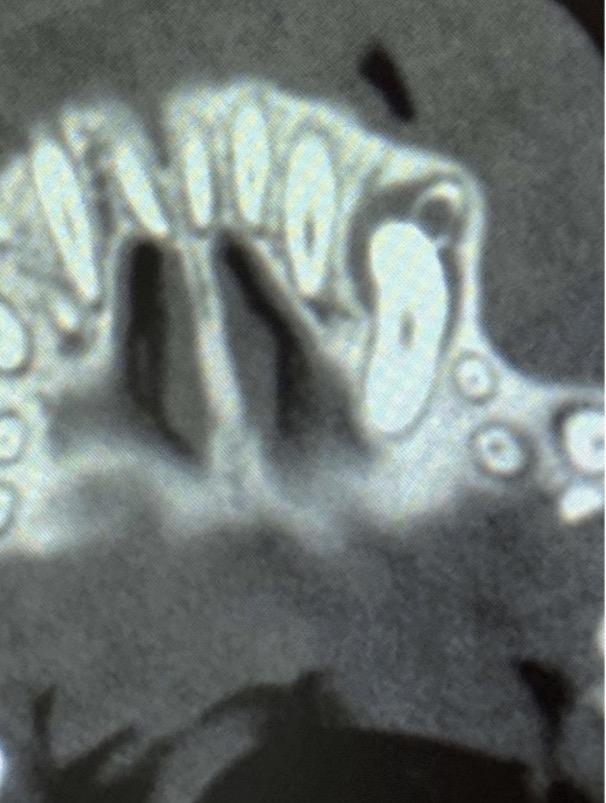Dental Exam Findings and Outome
The areas having persistent deciduous teeth: The upper right (503, 504) – no adult/permanent dentition is below the gumline. (Because patient broke a deciduous tooth in the exam room, Dr. Mathis felt the risk of deciduous tooth fracture was significant, so extracted 503, 504.)
The upper left permanent canine (604 retained root due to exam room fracture) is present as an unerupted tooth. The tooth lies in a bent shape and extends into the sinuses.
The overlap of the retained tooth root of 604 and the malpositioned 207 resulted in extraction and temporary oral nasal fistula of 204-207 region.
To Dr. Mathis’ surprise, the area between 110 and 109 had a 3mm pocket and apical changes were seen on 3D imaging.
110 was extracted to prevent progression of periodontal disease of that area. With crowding and skull shape, Shih Tzu’s are prone to periodontal disease even with such a diligent owner that brushes her pets’ teeth.
Finally, the lower canines were under erupted and were the height of the loose lower incisors.
An apically repositioned flap was performed to remove the pseudopockets and expose an almost normal amount of lower canine tooth enamel returning the area to an appropriate periodontal health.






















